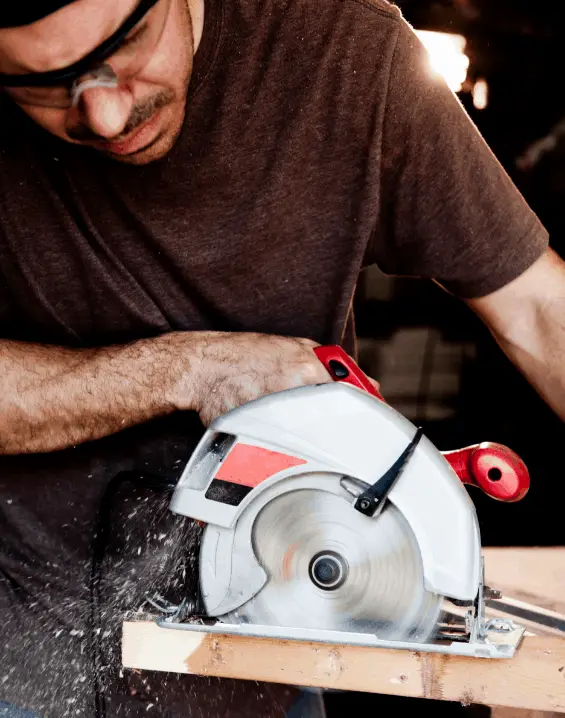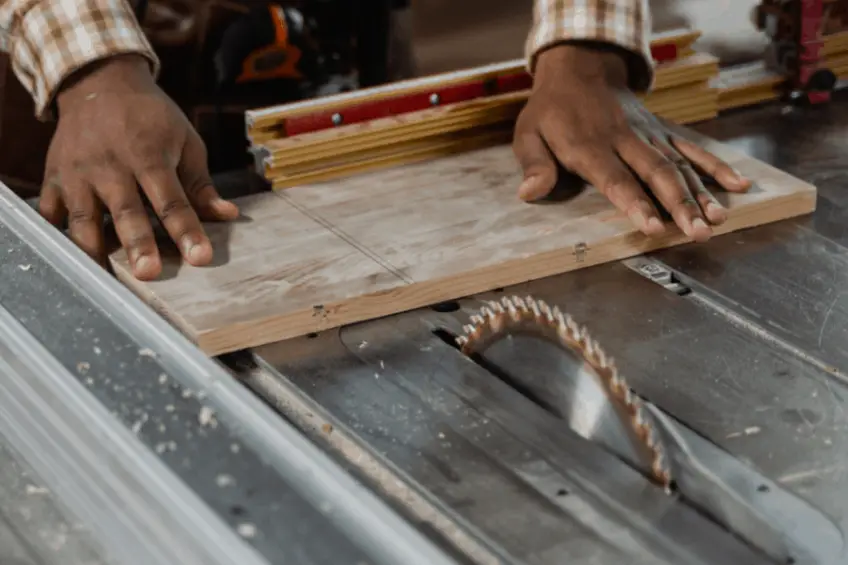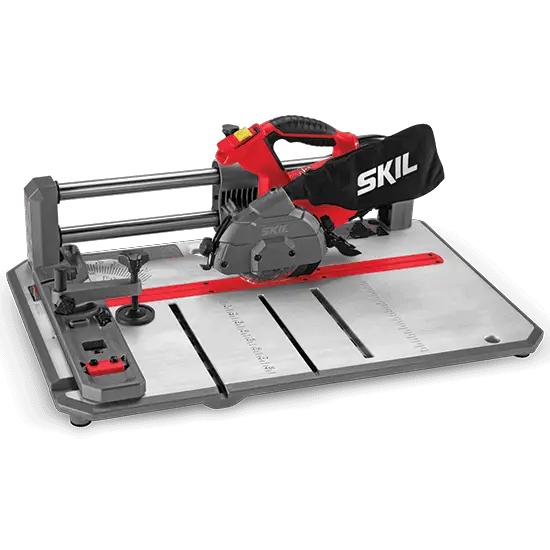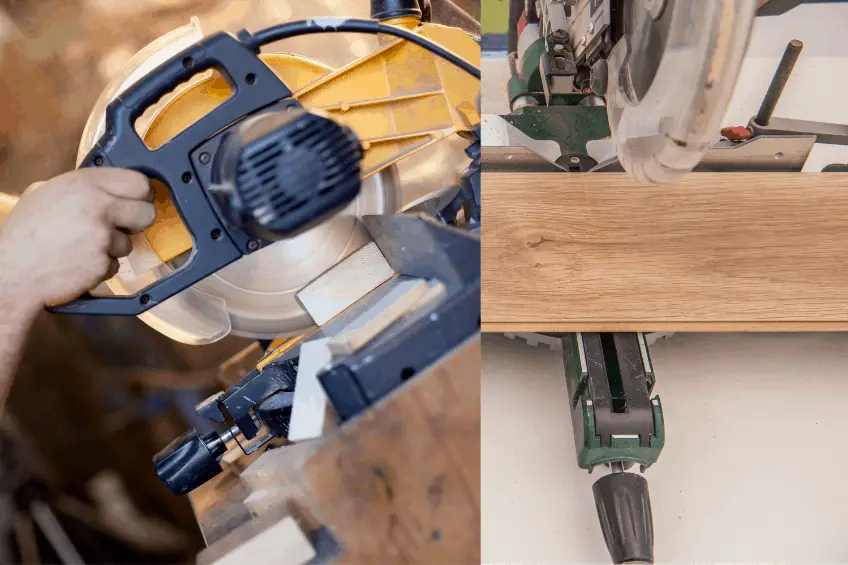This post contains affiliate links.
Installing hardwood flooring can be quite intimidating and scary at the same time especially if it’s the first time you’re doing this. One of the challenging tasks, but is quite easy to learn, is cutting the floorboards to their proper sizes. In order for you to get this job done properly, you would need to use the right saw to use for the required floorboard cut type you would need.
So, what kind of saw do you need to cut hardwood flooring?
The common saws used for cutting hardwood floors are the circular saw, miter saw, and table saw. A circular saw is portable and can do rip cuts, crosscuts, and miter cuts. A miter saw is best used to make accurate crosscuts and miter cuts. A table saw is best used for making accurate rip cuts.
These are just the 3 most common saws being used for cutting hardwood flooring, but there are a few more saws that you can consider using for your hardwood flooring installation project, each with its own set of advantages and disadvantages.
5 Best Types of Saws for Cutting Hardwood Floors
While there are several wood cutting tools you can actually use for cutting wood floors, below are 5 of the best saws that you can use for cutting hardwood floors.
1. Circular Saw
A circular saw is a portable power saw that can be used to cut wood flooring. It uses a rapidly rotating toothed disk that you glide through the wood. It is the cheapest power saw a DIY beginner can use for cutting hardwood floors and for any woodworking project for that matter. It can be used to make cross cuts or cuts that are perpendicular to the length of the boards, rip cuts or cuts that are parallel to the length of the boards, and straight notches.

Since it is portable, you can make cuts where you’re installing your wood floor rather than going outside to do the cutting. This can save you a tremendous amount of time. They also usually have ports to connect to any portable dust collector to minimize wood dust accumulating in the flooring installation area.
One of its drawbacks is that it can only be used to make straight cuts. You can’t cut curves or beveled cuts to a hardwood floor using a circular saw. To make straight cuts, you would need to create a jig or a straight edge clamped down to the hardwood floorboard to use as a guide while cutting.
For a beginner, a circular saw is enough for most wood flooring cutting needs as it can do both rip cuts and cross cuts. Since you can easily make less precise cuts compared to a miter saw or table saw, due diligence of measuring twice and cutting once should be practiced when using this cutting tool.
Check out the best circular saws you can get at toolnut.com.
Below is a good video showing the basics of using a circular saw.
2. Miter Saw
A miter saw is also a portable power saw but less portable than a circular saw. It also uses a rapidly rotating toothed disk to cut wood. It is best used for making quick and accurate cross cuts to hardwood floorboards. You can easily get a 90° cut without preparing any special jig or clamping down a straight edge as the tool already have a steel fence included to push the edge of the floorboard straight while cutting.

Unlike using a table saw, when using a miter saw the floorboards remain stationary while the blade goes through the wood material.
A miter saw can also be set to cut miter cuts or 45° cuts. Some miter saws, called compound miter saws, can make compound cuts wherein the cuts are mitered and beveled at the same time. You won’t actually be making these types of cuts to your wood flooring though so a regular miter saw will work well in most cases for your wood floor cutting needs.
Miter saws come in 7-1/4″, 10″, and 12″ diameters. For most woodworking projects, a 10″ diameter miter saw will work best. There’s also a battery-powered miter saw available that makes it more portable.
One of the limitations of using a miter saw is that the floorboards you can cut are limited by the diameter of the blade that you are using. If you are using a 7-1/4″ miter saw and you have wide floorboards that are wider than the diameter of the blade, you won’t be able to make cross cuts.
Miter saws can’t do rip cuts, so you would normally have a table saw, or circular saw with you to make any rip cuts you would need for your wood flooring project. It can also only do straight cuts and you won’t be able to create curved cuts using this tool.
There are several options for miter saws in the market. Check out some of them on toolnut.com.
Below is a good video showing some tips on using a miter saw.
3. Table Saw
A table saw is a power saw with a rapidly rotating circular toothed blade protruding on top of a table that supports the piece of wood you will be cutting. When cutting your wood floor, you place the floorboard on top of the table saw surface and guide it through the rotating blade.

It’s not as portable as the other power saws and you usually have this standing outside of where you’re installing the wood floor or inside your woodworking shop.
While it is best used for making quick and accurate rip cuts, it can also make a variety of cut types as well. Not only can it do rip cuts to your floorboards, but it can also make beveled cuts, cross cuts, and miter cuts. For cutting hardwood floors, although a table cut is considered as a versatile saw that can do most of the common cut types, it is usually used for doing just the rip cuts on the floorboards. It is then paired with a miter saw or circular saw for doing the cross-cutting jobs.
Toolnut.com has several table saws to choose from. Check out the best-rated table saws.
Below is a good video showing the basics of a table saw.
4. Jigsaw
A jigsaw is a portable saw that uses a reciprocating thin blade that is normally used for creating curved or irregular cuts. For fitting a hardwood floorboard around a door jamb, pillars, or toilet fixtures with curves or irregular profiles, a jigsaw is a perfect tool to create the cuts needed on the floorboards.

Technically, a jigsaw can also be used to cut straight cuts on floorboards such as cross cuts and rip cuts, but it takes a lot longer to do compared to using a circular saw, miter saw, or table saw. So most of the time, a jigsaw is usually used only for creating irregular cuts, and notches that the circular saw, miter saw, and table saw cannot produce.
Check out toolnut.com for the best-rated jigsaw you can get.
Watch the video below on the basics of using a jigsaw.
5. Flooring Saw
A flooring saw is an uncommon cutting tool but more people are choosing to use this for their flooring projects over the common miter saw or table saw. It can do fast and accurate rip cuts, cross cuts, and miter cuts to floorboards. It is not only lightweight and portable, it is also cheaper than most of the power saws used for cutting floorboards. It can easily replace the job of a miter saw and table saw for cutting hardwood floors.

A disadvantage of using a flooring saw is that it can be loud and you would need ear protection when operating it. Also, the built-in dust bag is not enough to contain the wood dust it creates when cutting floorboards, using it can be a bit messy. You have the option though to connect it to a vacuum or dust collector to minimize the mess it creates.
You can get a flooring saw from Amazon. Check out the latest models that are available.
Here’s a video showing a review of one of the popular brands of flooring saws.
3 Other Saws You Can Use When Cutting Hardwood Floors
Apart from the 5 saws that are listed above, there are 3 more saws that you might consider using when cutting hardwood floors. These are uncommon tools used for cutting floorboards but they can be good tools to consider using for certain flooring project situations.
1. Oscillating Multi-Tool
An oscillating multi-tool is a power tool with its end that vibrates or oscillates. It has multiple attachments which include different saw blades that can be used for cutting wood. For flooring projects, you can use this tool to make undercuts on door jambs, or wall moldings to create space for floorboards to slide underneath.
There are several options for oscillating multi-tool you can get from Amazon. Check out the best-rated oscillating multi-tool models.
Below is a video showing how it can be used to make an undercut on a door frame.
2. Jamb Saw
A jamb saw is a power tool that creates the same end result similar to an oscillating multi-tool when used for flooring projects. It can also be used for making undercuts. While an oscillating multi-tool can work with wood materials, a jamb saw not only can be used for wood materials, you can also use it for undercutting stone materials as well.
There are a few jamb saw you can get from Amazon. Check out the best-rated jamb saw models.
Here’s a video showing a good demonstration of how a jamb saw can be used for making an undercut.
3. Band Saw
A band saw is a power saw that can be described as a cross between a table saw and a jigsaw. Just like a table saw, it’s not as portable and it also has a table surface where you place a wood piece you would like to cut and push it towards the reciprocating blade. You can use it for making rip cuts, cross cuts, miter cuts, and other types of straight cuts.
Just like a jigsaw, it uses a reciprocating blade which you can also use to create curved and irregular shapes.
Check out the best-rated band saw models on Amazon.
Below is a video showing different ways of using a band saw.
All About Materials is a participant in the Amazon Services LLC Associates Program, an affiliate advertising program designed to provide a means for sites to earn advertising fees by advertising and linking to Amazon.com. We also participate in other affiliate programs which compensate us for referring traffic.

